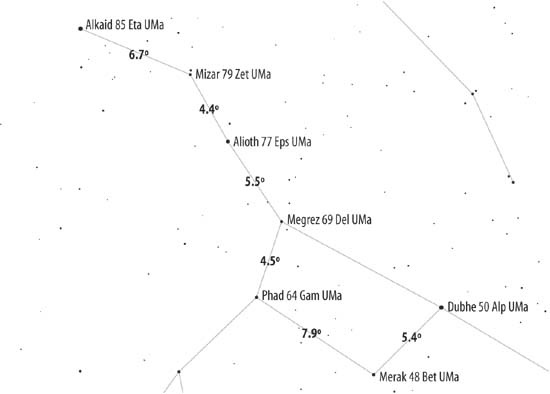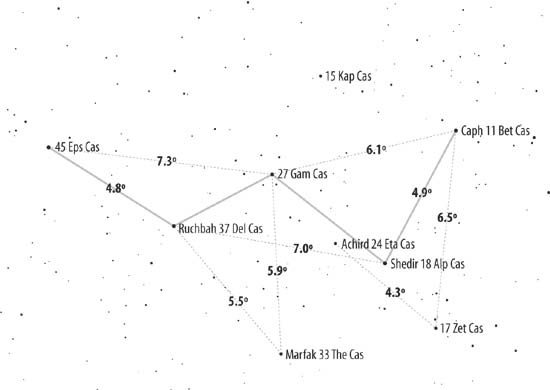For simple pointing, the field of view doesn’t matter, as long as it’s wide enough for you to locate the object easily. For star hopping, it’s important to know the field of view of your finder with reasonable accuracy.
An optical finder serves two purposes. The obvious one is to help you point your scope at bright stars and other objects. The less obvious purpose is to provide a known field width when you are star hopping [Hack #21]. There are three ways to determine the field of view of your optical finder:
Look it up. Most manufacturers publish the field of view. Unfortunately, the stated field is not always accurate, particularly for inexpensive Chinese finders. For example, a finder with a stated 5.5° field may have an actual field of 5° (or 6°).
Drift test the finder [Hack #57]. Although drift testing gives very accurate results, it is time consuming. If you are using a new or borrowed finder, you may not have time to do a drift test.
Use the finder to look at pairs of bright stars with known separations. For example, if the published field of view of the finder is 5.5°, two stars separated by exactly 5.5° should just barely fit in the finder’s field of view. If they fit with room to spare, estimate how much “extra” field you have. If it’s about 5%, the actual field of the finder is 5.5 x1.05, or about 5.8°. If they don’t quite fit, you can use another pair of stars with a somewhat smaller separation and estimate the actual field quite closely.
Most optical finders have fields of view between 4.5° and 8°. Fortunately, there are two prominent groups of stars that provide several bright star pairs with separations suitable for estimating your finder’s field very accurately. The Big Dipper, shown in Figure 4-29, provides star pairs with separations from 4.4° to 7.9°.
Cassiopeia, shown in Figure 4-30 provides bright star pairs with separations from 4.3° to 7.3°.
The Big Dipper and Cassiopeia are both circumpolar, but on opposite sides of the pole. That means that when the Big Dipper is low, Cassiopeia is high, and vice versa. One or the other is always high enough to use to measure the field of view of your finder.
Get Astronomy Hacks now with the O’Reilly learning platform.
O’Reilly members experience books, live events, courses curated by job role, and more from O’Reilly and nearly 200 top publishers.



